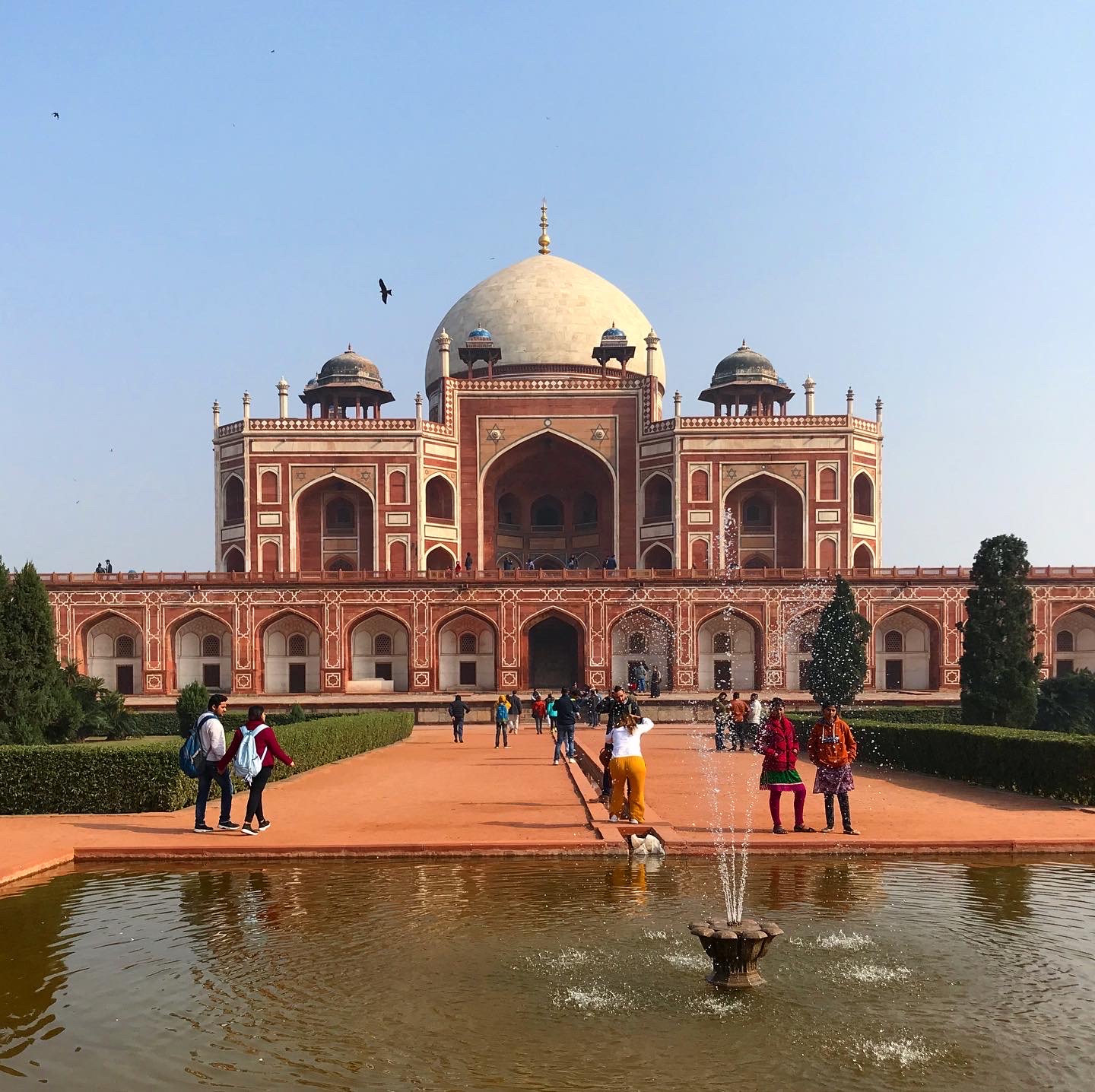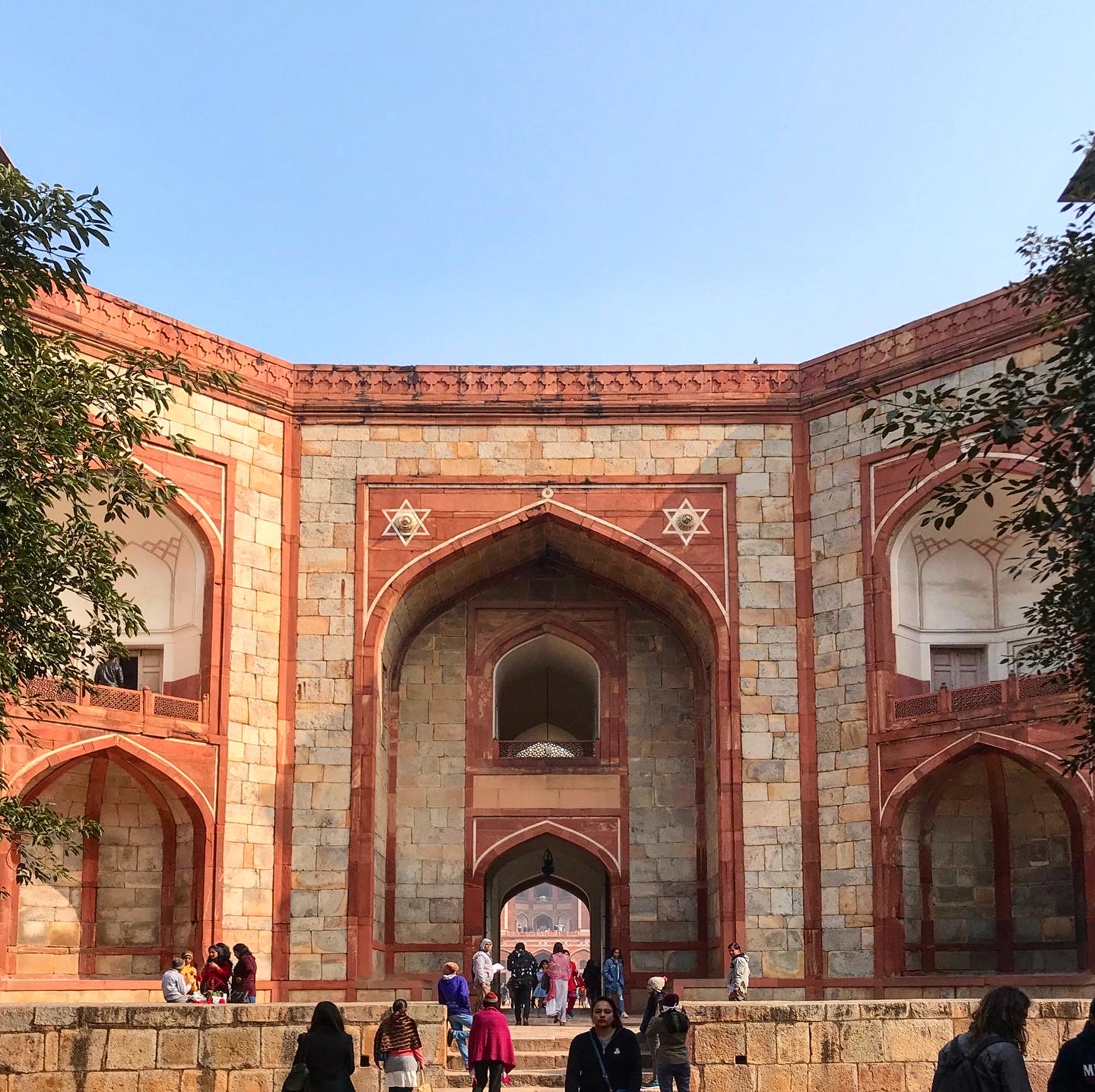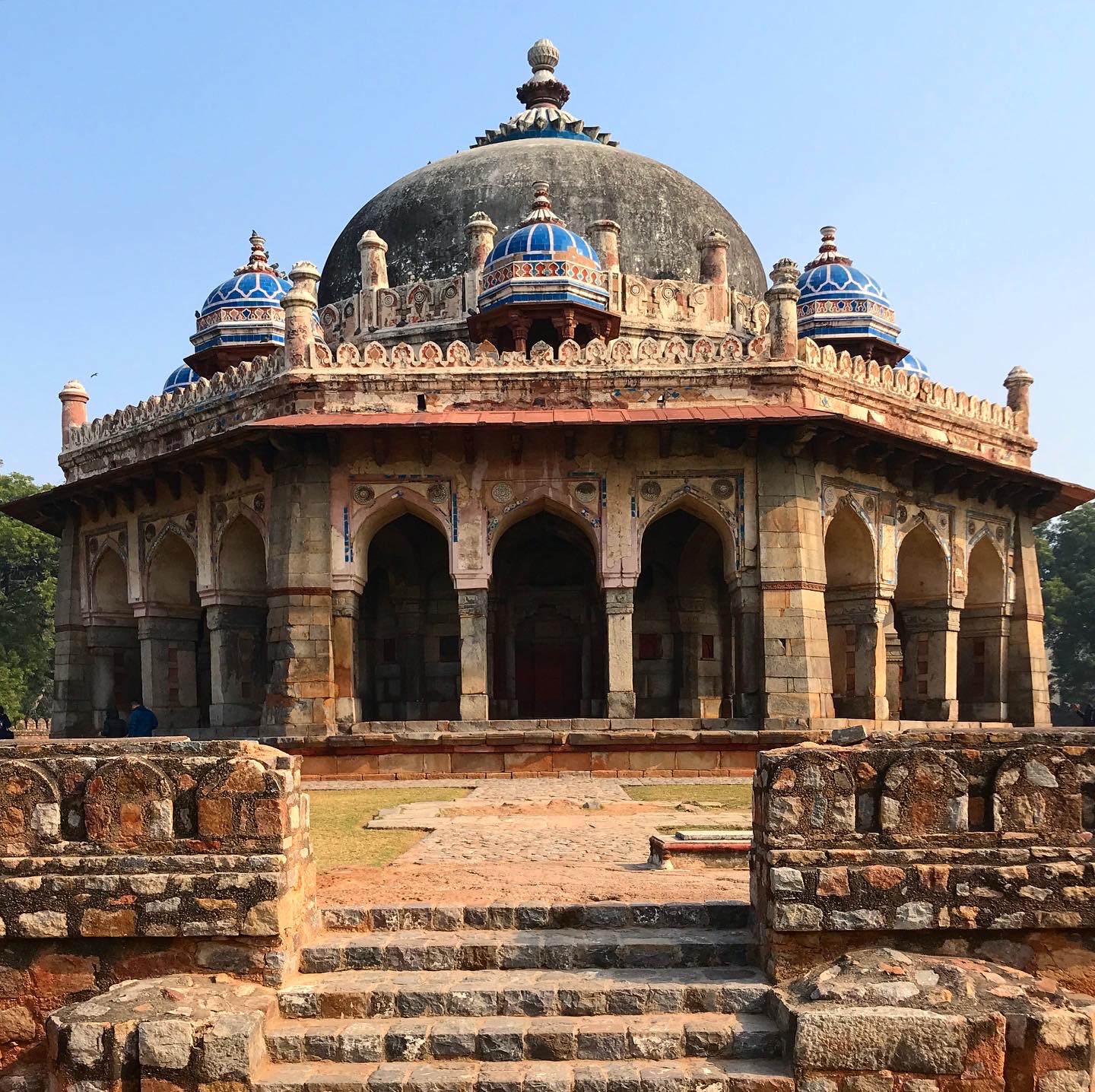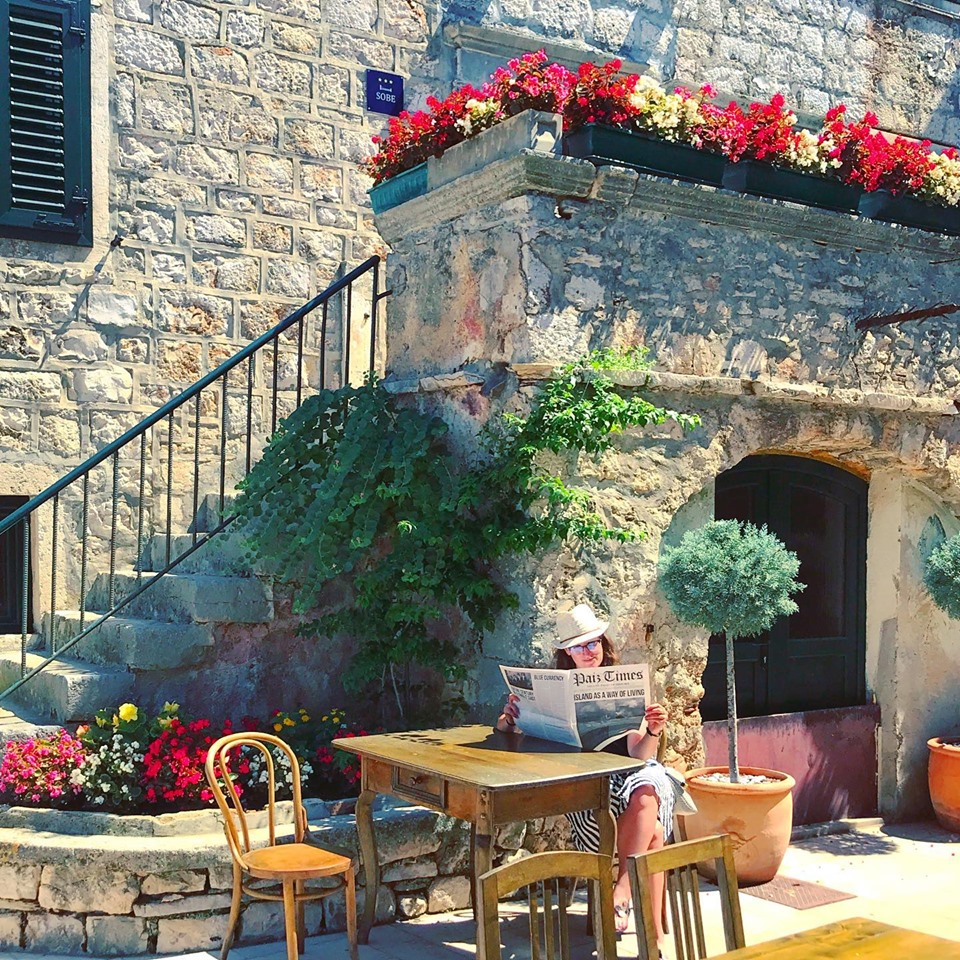
Top sights in Delhi through pictures
If I need to choose the top sights in Delhi, then I would definitely opt for the four architectural masterpieces: Red Fort, Humayun’s Tomb, Jama Masjid Mosque, and Qutub Minar.
Focusing on these four monuments does not mean that Delhi fails to provide its visitors with sights to admire. Since Delhi was the Indian center for many political activities from the Mughal to the British era, it offers a vast choice of architectural monuments. Nevertheless, I am choosing these four as my top sites in Delhi since they truly are architecturally stunning. So, let’s take a closer look at each one.
1. Red Fort – UNESCO World Heritage Site since 2007

This magnificent red fortress with only hints of white was commissioned for construction by Shah Jahan – the same emperor who built the Taj Mahal. There is a similar fort in Agra and the one in Delhi was built when Shah Jahan decided to move the capital from Agra to Delhi. The construction started in 1638 and was completed ten years later. Until nowadays, it remains one of Delhi’s best preserved monuments. Some of its highlights are the main gate, the Peacock throne, the pearl mosque, the pavilions, the hamams, and maybe the most stunning of them all – the hall of private audience. At both ends of this hall, there is an inscription by the Persian poet Amir Khusrow:
If heaven can be on the face of the earth,
It is this, it is this, it is this.
2. Humayun’s Tomb – UNESCO World Heritage Site since 1993

Said to has inspired the Taj Mahal, Humayun’s Tomb is the first tomb in India built in a garden style. The tomb was commissioned by the first wife of the Mughal Emperor Humayun, Empress Bega Begum, and it became the final resting place of Humayun nine years after his death! The Empress chose Persian architects for the design of the tomb, which made Humayun’s Tomb one of the finest, but also first, examples of Persian architecture in India.
This monument represents more the inception of the Mughal architecture in Delhi, rather than a typical example of it. Together with its gardens in authentic Persian style, it set the foundations for the subsequent Mughal architecture. Architecturally speaking, this tomb is seen as the drifting away from the modest mausoleums that preceded it and as the emerging of royal mausoleums. Needless to say, these royal mausoleums peaked with the Taj Mahal.
Humayun’s Tomb attracts a flocks of tourists and locals every day, partially also because of its location. The area is especially beautiful and calming, since the surrounding forest and gardens provide an escape from Delhi’s crowd and pollution. In 2018, Time Magazine listed the neighboring Sunder Nursery one of the 100 World’s greatest places to visit, largely due to its location:
Between the pollution and the crowds, it’s hard to get away in New Delhi. But now the Indian capital offers a respite: the city’s first arboretum.
3. Jama Masjid Mosque
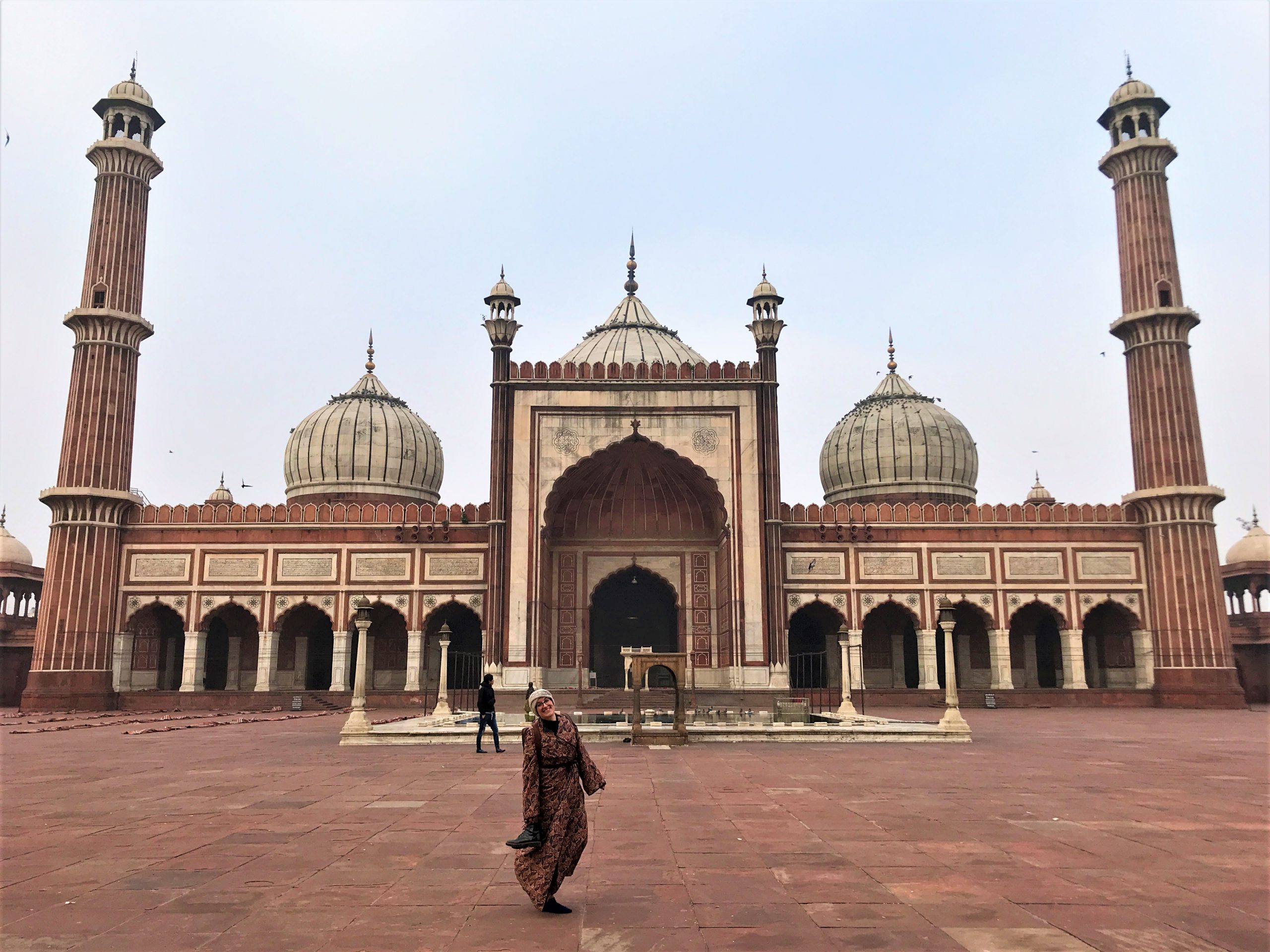
It seems like Shah Jahan was quite an admirer of red sandstone and white marble, as well as of the construction of huge monuments. Same as the Red Fort and the Taj, the emperor also commissioned the construction of Jama Masjid (Friday Mosque).
Six thousand workers built this mosque in six years (1650 – 1656). Nowadays, it is one of India’s most famous Islamic temples. As such, it deserves to be considered one of the top sights in Delhi. The center piece is a symmetrical building with three domes and two 40-m high minarets on each end. The mosque is truly stunning at sunrise, especially if Delhi is not so polluted. I quite enjoyed all the pigeons flying around – they gave the temple a unique spiritual vibe. The visitors must take off their shoes before they enter the huge yard that can host 25.000 worshipers. Additionally, women must wear full-body cover.

4. Qutub Minar – UNESCO World Heritage Site
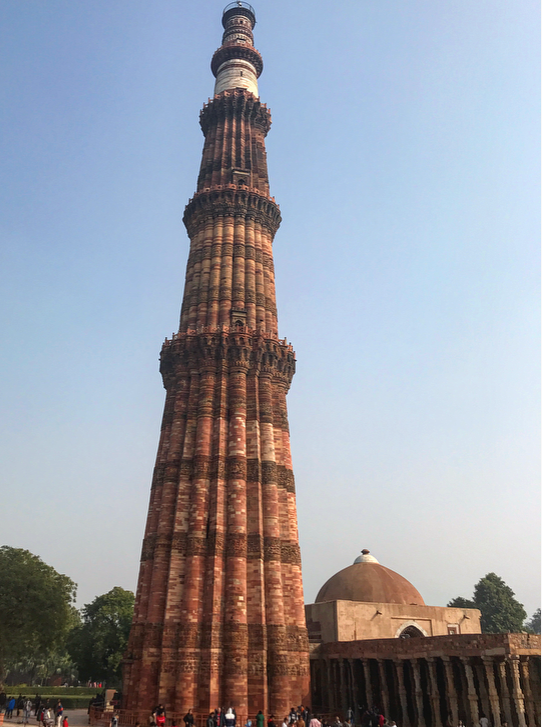
This 73-m high monument is the most famous and most prominent monument in the Qutb Minar complex as well as one of Delhi’s tallest towers. It has five parts/stories: the first three are made of pale-red sandstone, the fourth is made of marble, and the last one is made of sandstone-marble mixture. The tower is lavishly engraved with either texts from the Quran or with decorations.
The “life” of this tower has not been an easy on though. It was damaged once by a lightning and twice by an earthquake. Each time it was rebuilt and altered – even by the British. Finally, it obtained its final look some time in the 19th century. However, Qutub Minar’s darkest day is probably happened on 4th of Decemebr 1981. On this day, a staircase lighting failed and around 500 people tried to run out of the tower. In the massive panic, 47 people – out of which most were children – were killed. Since then, entering the tower is almost completely prohibited.
However, do not think that this high tower is the only monument that you will see at the Qutub Minar complex. That would be the equivalent of thinking that the Eiffel Tower is the only landmark in Paris. The Qutub Minar is old and excellently preserved; you can see ruins, engraved stones, and outstanding mausoleums as well. Thus, this is a sight that should not be missed.
The end of a tour
So tell me: how did you like traveling through Delhi with me? Which sight is your favorite one? Do you like reading “travel journals”?
Until we meet again – stay well my friends.







